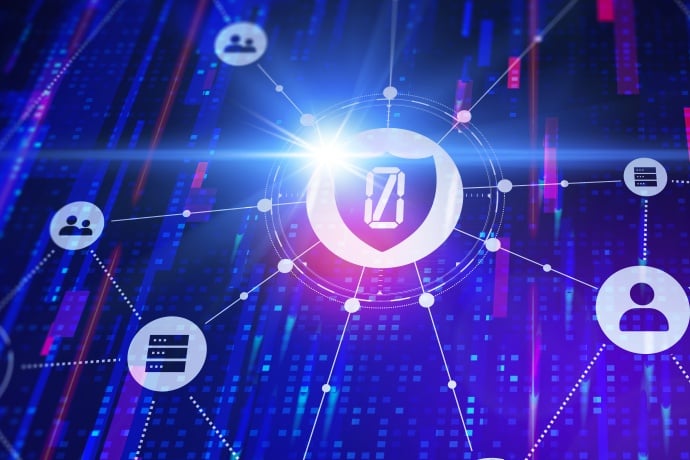Why IT is Giving 'Zero Trust' a Close Look
Modern SOCs drowning in complexity are eager for integrated solutions that will work well together to strengthen security
As I’ve noted in this space on other occasions, perimeter-based security won’t cut it in an era defined by the cloud and mobility.
We can’t simply rely on firewalls to protect an organization’s information. Data moves around too much and it’s as likely to be in transit back and forth to the cloud as it is to be sitting inside your four walls. That’s why organizations are focusing on multi-pronged approaches to defend themselves against attacks coming from different vectors.
When we think about the right security architecture and techniques to lock down data, a lot of it really comes down to implementing the basics correctly – limiting access to only those that that truly need it, placing additional protections on your most sensitive data, and making sure you have visibility to who is accessing what.
But increasingly, security managers find themselves grappling with the complexity that inevitably results from cobbling different cyber defense technologies to protect the network. This is where things quickly get unwieldy with SOCs scrambling to keep on top of the alerts that come streaming across their consoles from different technologies.
These solutions need to be integrated together and work well together. Otherwise, there is no way the modern SOC manager can prevent the emergence of independent silos, not to mention remaining sane.
Zero Trust Basics
One approach is to embrace a model of information security that Forrester Research calls Zero Trust. At its core, Zero Trust is a conceptual and architectural model governing how security teams ought to go about redesigning their networks. The model promotes a more holistic approach to information security and puts special focus on processes and technologies. The goal is to produce secure micro-perimeters, strengthened data security using obfuscation techniques, limit the risks associated with excessive user privileges and access, and improved security detection and response with analytics and automation.
In practice, that means finding cyber security solutions that have certified integrations with automated orchestration capabilities that lower the operational burdens on your teams. You need tools that will inform each other without human intervention that can accurately detect threats across the entirety of the environment - including all of your devices, your network, and the cloud.
Why Some Organizations are Embracing Zero Trust
Being part of the world’s leading cyber security company, I have a unique vantage point to trends gaining traction in the market. I’ve seen an uptick of projects at key customers of ours that are aligned with a Zero Trust Ecosystem approach. Some CIOs and CISOs are adopting part of the Zero Trust framework as their internal template to change their security architectures.
The good news for Symantec’s customers is that many aspects of our solution framework – known as our Integrated Cyber Defense Platform - align closely to a Zero Trust platform model. Irrespective of the nomenclature, let’s consider the reasons why companies are showing real interest in an integrated platform approach as they look to re-architect their security infrastructure.
- It provides the full breadth of products and services – across endpoint, network and cloud – required to protect business from the types of advanced threats that are targeting them every day. And once threats are identified, orchestration capabilities simplify the task of responding to them across all connected devices – including mobile. This kind of platform can either stop a breach before it happens, or at the very least, catch it quickly and get the right mitigation steps in place.
- It aligns with the reality that corporate data can be, in many ways, everywhere. In addition to the traditional network and datacenter, it can be in cloud SaaS apps, workloads in AWS or Azure, mobile devices – both corporate and personal and thumb-drives. It can even be on IoT devices. Zero Trust platforms like Symantec’s Integrated Cyber Defense platform where created with this reality in mind and have the tools and capabilities to protect your data at all times, wherever it resides.
- Given the increasingly strict compliance requirements - especially in the aftermath of the passage of GDPR in Europe – platforms provide big help here when it comes to securing data, enforcing identity and access controls on devices and network, segmenting network and workloads.
This remains a relatively new concept and likely to undergo more modifications. But whether this is the exact framework or not is neither here nor there. The capabilities in the Zero Trust framework described by Forrester are ones where we think any modern enterprise really needs to have to secure their data and infrastructure. If you are not doing something in one of these areas, then you are going to be exposed.
Look for us to follow up on this blog with a series of posts looking at some of the key “pillars” of a Zero Trust platform along with a discussion of how customers are using Symantec solutions to implement a Zero Trust security model.
If you found this information useful, you may also enjoy:
Listen To Forrester's Podcast: The Zen of Zero Trust







We encourage you to share your thoughts on your favorite social platform.